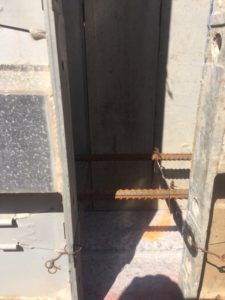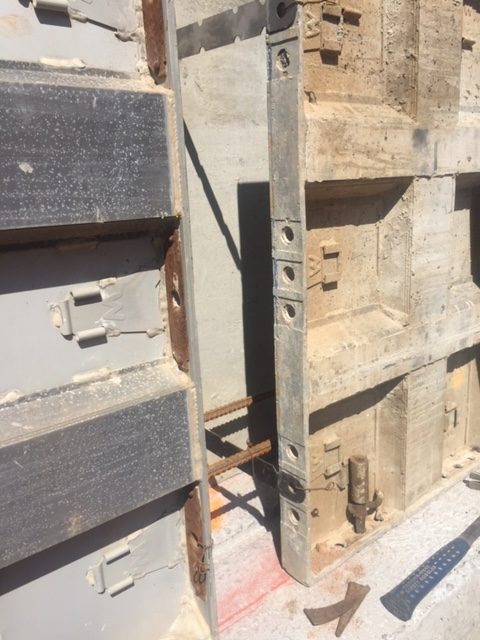Tricks of the Trade: “Droopy Tie Syndrome”
from Dennis Purinton, Purinton Builders, East Granby, Conn.
This issue’s Tricks of the Trade is shared by a CFA member (the current president) in the spirit of continuing to share great ideas and to challenge you, the reader, to consider the ways you overcome annoying details and situations to be more effective and economical in your work. If you are from an active CFA member company and your trick is selected for publication, your company will have 50 points placed into your account for Member Rewards, redeemable for your CFA transactions. If you are from a company that is not a member, we will offer you a $100 discount on your first year’s membership fees — a great way to get to know the CFA.
 More and more it seems that our projects are requiring a change to be made at some point nearing the end of forming, requiring us to open up a section of formed wall. Has this ever happened to you? Maybe the customer has decided that he/she wants to add a window to a particular section of the wall or change the size of the opening to a regulation egress condition. Sometimes the builder identifies the need for additional utilities (or the utility plan information does not arrive on time), where a sleeve is now necessary. There are also those annoying times when a member of your crew inadvertently drops something into the wall. Whether that coffee cup or soda can will be noticed or not, they don’t make quality aggregates and our position is to have the formed condition cleaned immaculately for inspection. There are even those times when we have been required to add reinforcement during an inspection.
More and more it seems that our projects are requiring a change to be made at some point nearing the end of forming, requiring us to open up a section of formed wall. Has this ever happened to you? Maybe the customer has decided that he/she wants to add a window to a particular section of the wall or change the size of the opening to a regulation egress condition. Sometimes the builder identifies the need for additional utilities (or the utility plan information does not arrive on time), where a sleeve is now necessary. There are also those annoying times when a member of your crew inadvertently drops something into the wall. Whether that coffee cup or soda can will be noticed or not, they don’t make quality aggregates and our position is to have the formed condition cleaned immaculately for inspection. There are even those times when we have been required to add reinforcement during an inspection.
 No matter the reason, these changes and happenstances result in the necessity of opening up a section of the already-formed wall. When you pull that form panel(s) out, whether it is a full or filler, the ties between it and the adjacent panels are likely to fall out of position. Some form systems have just enough of a notch to position them back in place while you carefully reinsert the panel. More than likely, however, the multiple vertical ties at each seam are not easily held in place, and then there are those sitting between two removed panels as well.
No matter the reason, these changes and happenstances result in the necessity of opening up a section of the already-formed wall. When you pull that form panel(s) out, whether it is a full or filler, the ties between it and the adjacent panels are likely to fall out of position. Some form systems have just enough of a notch to position them back in place while you carefully reinsert the panel. More than likely, however, the multiple vertical ties at each seam are not easily held in place, and then there are those sitting between two removed panels as well.
During a recent shared experience with a crew from Bartley Corp that came to help me on a project, I was introduced to this trick to resolve the problem, maintaining both efficiency and patience.
- Remove the necessary panels or fillers.
- Add or remove accessories, trash or design components that resulted in needing to remove the panels in the first place.
- Take any thin gauge wire (we use the same twister wire we use for our rebar), push it through the panel tie hole, then push it through the form tie.
- Twist the wire tight, aligning the form tie with the form tie slot in the panel.
- Replace the panel or filler.
- Reinstall necessary pins and wedges.
- Break the wire before trying to strip the form.
Try following these steps the next time you have to remove a panel and see if it lowers the frustration of getting all the ties lined up again quickly, so you can move on. One headache created by your customer or a crew member does not have to throw off the entire day.












Awesome trick! No longer will replacing a panel be a 2 man job! The days of having one of my guys sit on the top of wall feeding me ties with a rebar hook are over!